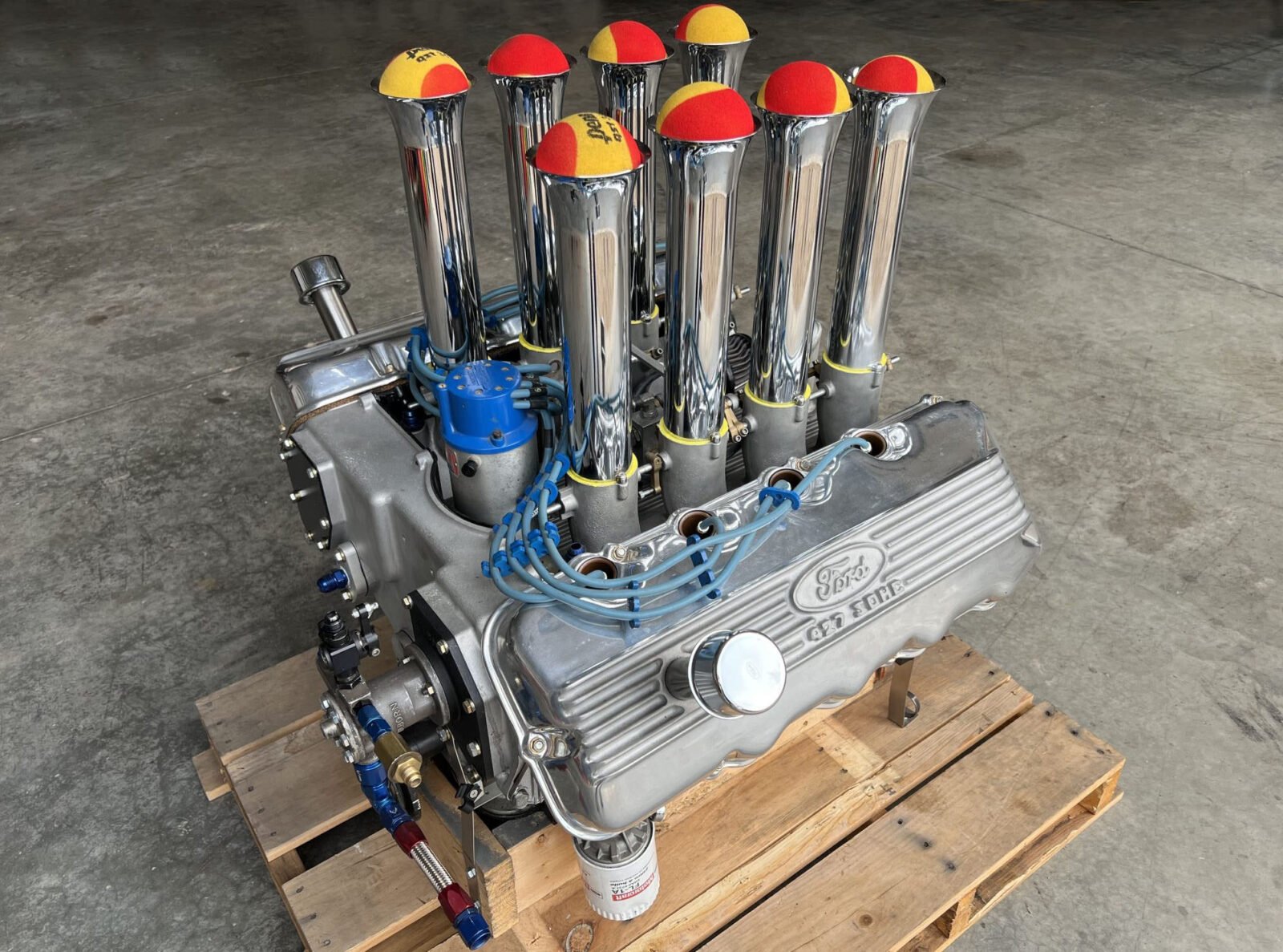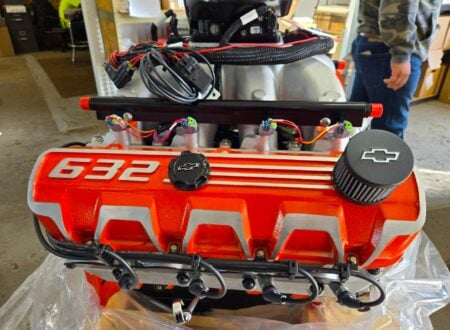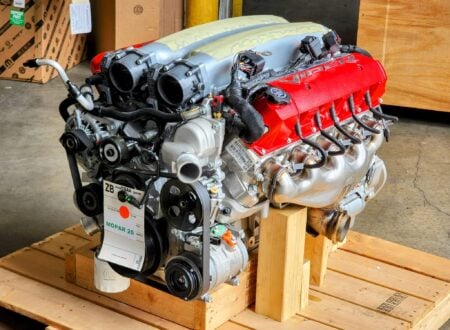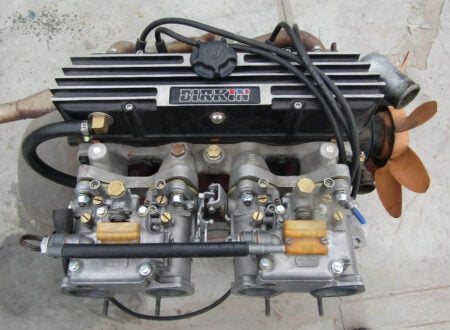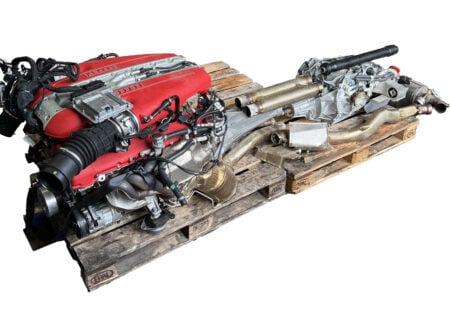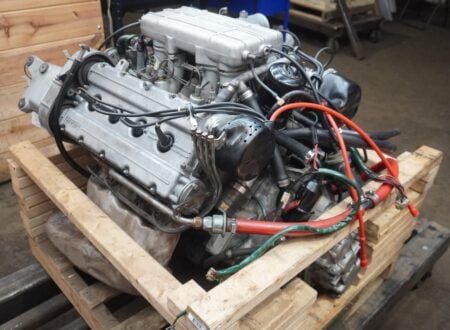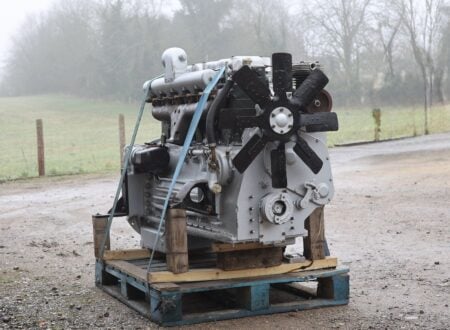This is an original 427 cubic inch Ford “Cammer” V8, it’s unusual for a number of reasons, though mainly because it was one of very few American production V8s to be designed with overhead cams in the 1960s.
The Ford Cammer V8 has been called the “90 Day Wonder” as its development program was somewhat rushed, being completed in just three months. The engine was intended to go NASCAR racing and challenge the Chrysler 426 Hemi “elephant” engine, however sadly it would never get the chance.
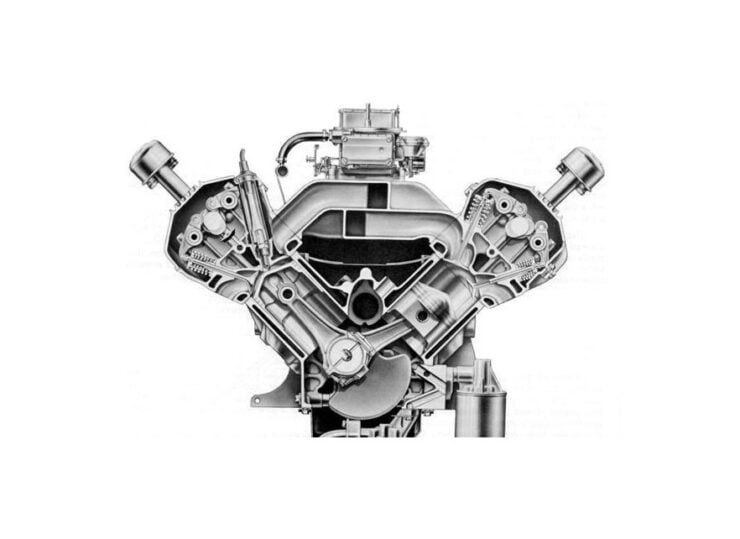

The reason the Cammer V8 never got to meet the 426 Hemi in NASCAR competition is that Chrysler successfully protested the use of the engine – NASCAR vehicles were supposed to be based on “stock cars,” and there was no Ford production car available with the Cammer V8.
As a result of this, the Cammer was banned from NASCAR and Ford was left with a new high-performance engine and nowhere to race it – the engine was capable of 616 bhp at 7,000 rpm and 515 lb ft torque at 3,800 rpm in factory-trim. These were seriously impressive numbers by the standards of the mid-1960s.
As it played out, it didn’t take Ford long to find a new racing avenue, the explosively popular world of American drag racing had far fewer restrictions on engines, and so Ford provided Cammer V8s to success drag racers from coast to coast – including Lou Baney, Pete Robinson, Tom Hoover, and perhaps most importantly, to Connie Kalitta in Michigan.
It would be Connie Kalitta who would become the first person in history to hit 200 mph at an AHRA event in 1965 with his modified Cammer.
Kalitta had done significant redevelopment work on the engine to try to solve its two most persistent issues – insufficient oiling at high RPMs, and the fact that the timing chain would stretch under heavy use and throw out the timing between the two heads.
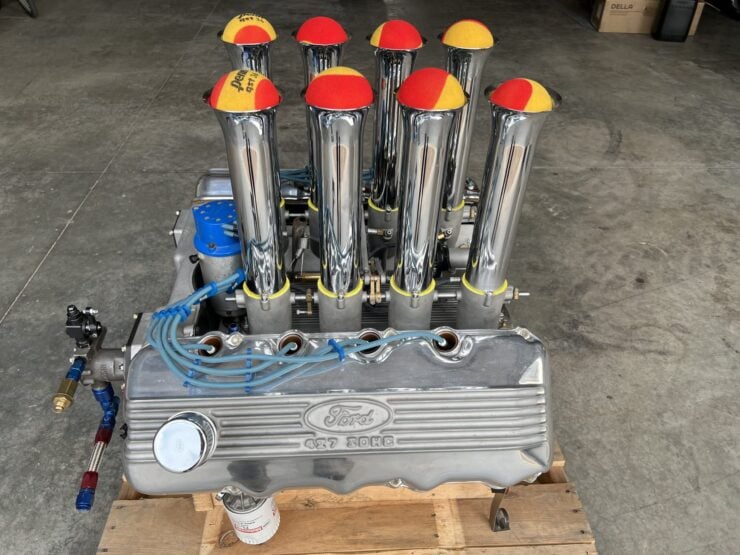

The timing chain issues were perhaps predictable, as Ford engineers had created a 6 foot long timing chain to operate both cams simultaneously. This was almost certainly due to the compressed development timetable, as development of a gear-driven cam system was deemed too time consuming to pursue.
Members of the Cammer drag racing community largely solved the issues with the engine, developing stretch-resistant chromoly cam chains, improved oiling, and more, eventually developing Cammers with up to 2,500 bhp.
Though Ford never put the Cammer V8 into a production car the engine has been fitted to a number of road-legal cars over the years, including this Ford Mustang.
The Ford “Cammer” 427 V8 Shown Here
The engine you see here is a Cammer V8 that benefits from a prior rebuild and it’s now sitting on a shipping pallet waiting for a new owner to fit it to a vehicle.
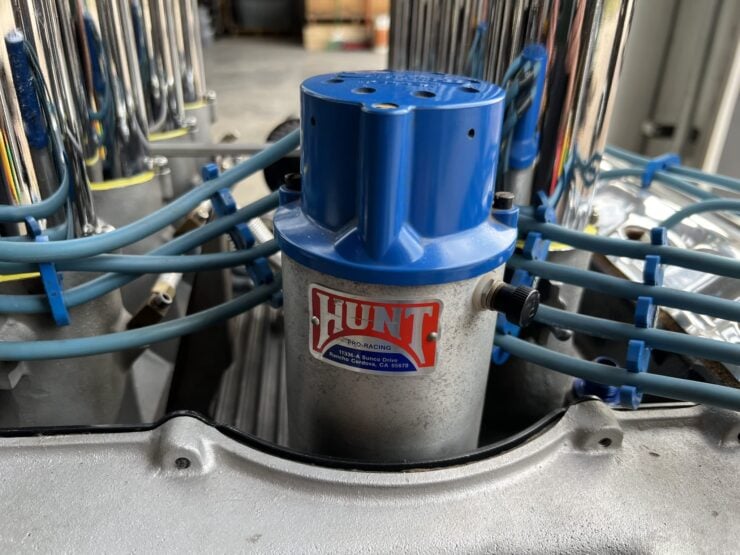

The original sodium-filled valves were removed and replaced with traditional valves, it has Joe Hunt Magnetos ignition components, a Hilborn eight-stack fuel injection system, it has cast-iron cylinder heads, and finned cam covers.
The engine is now being offered for sale out of Spearfish, South Dakota on Bring a Trailer and you can visit the listing here if you’d like to read more about it or register to bid.
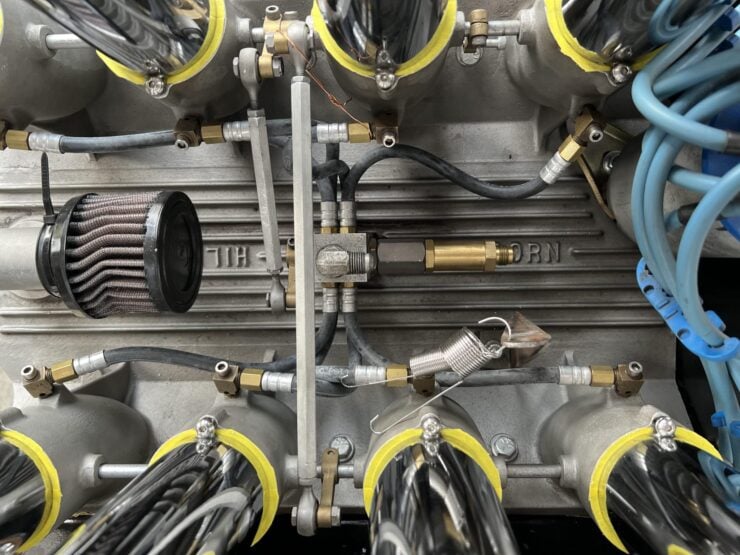
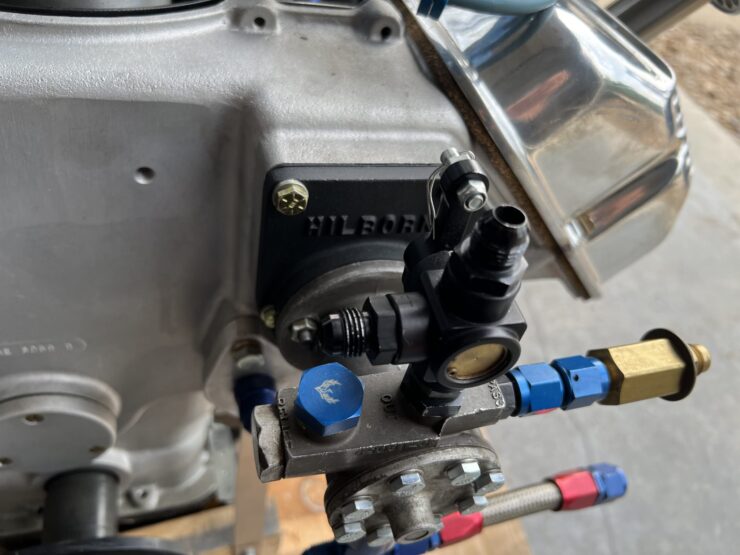
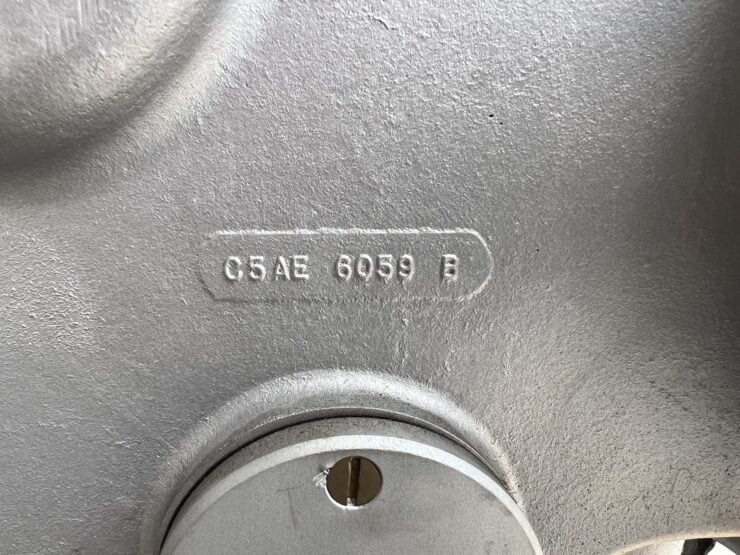
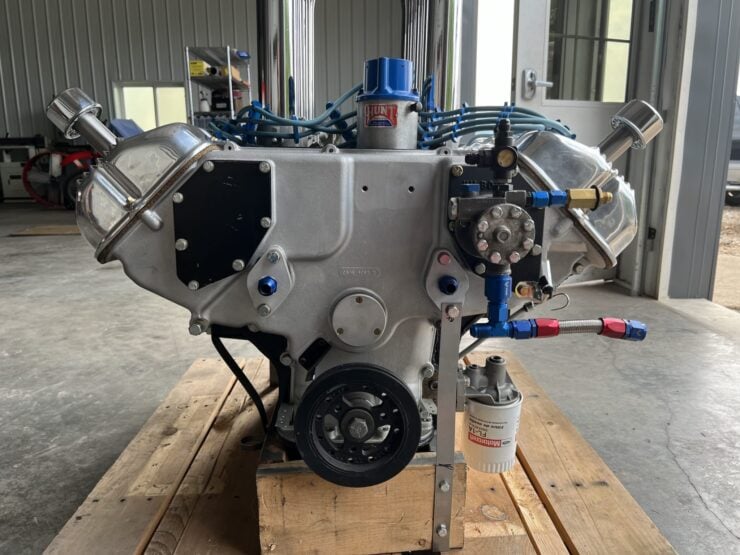
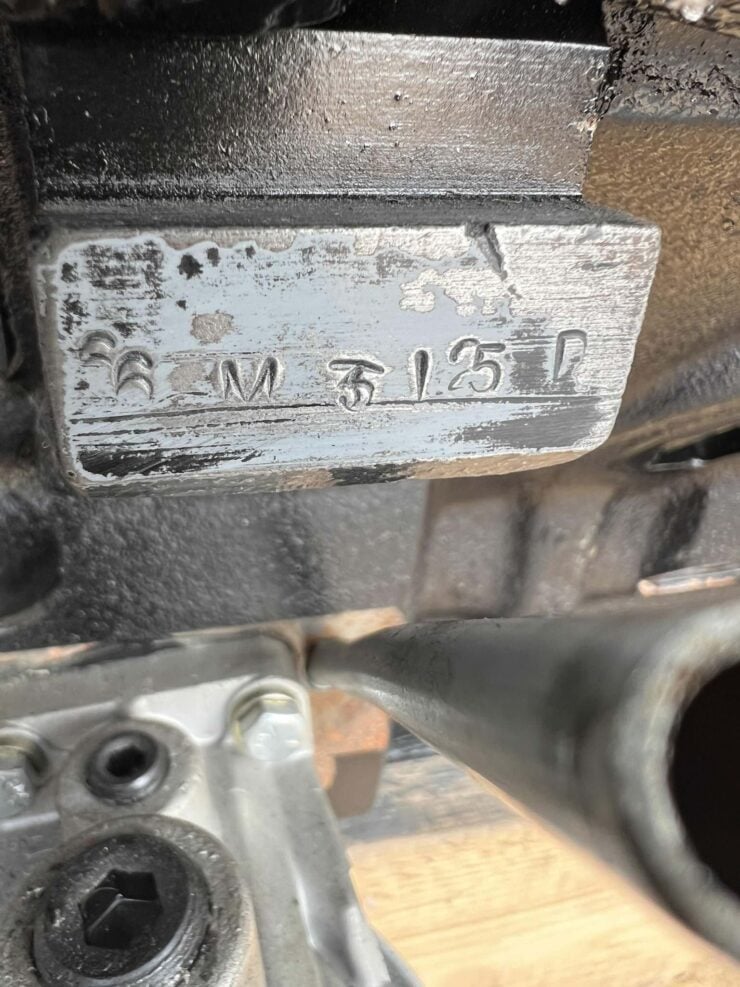
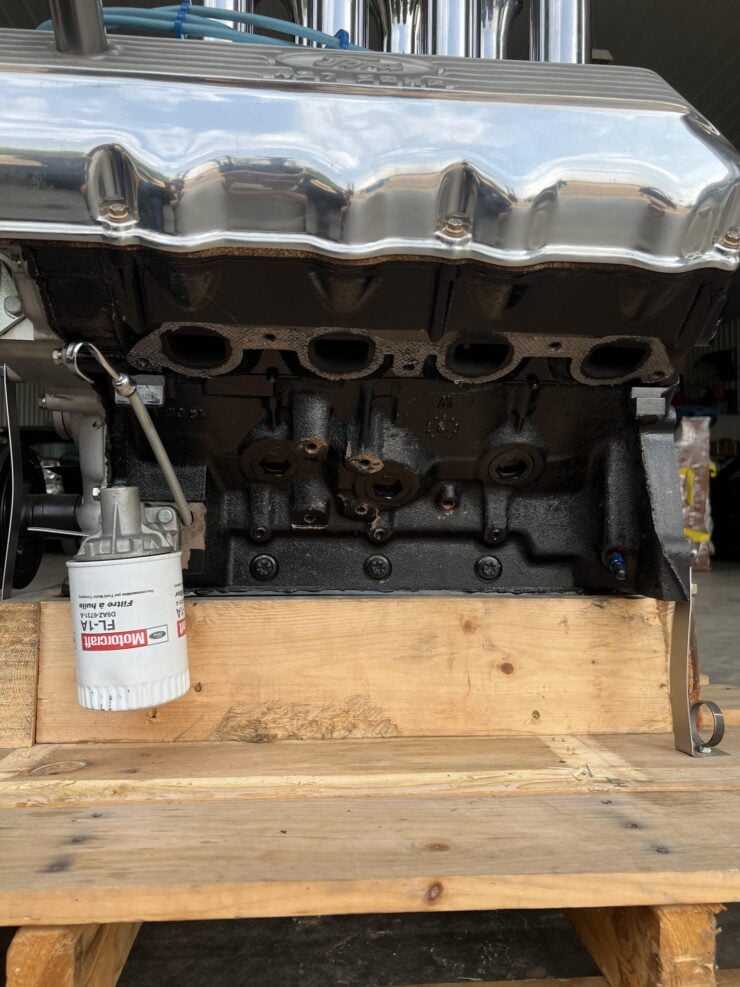
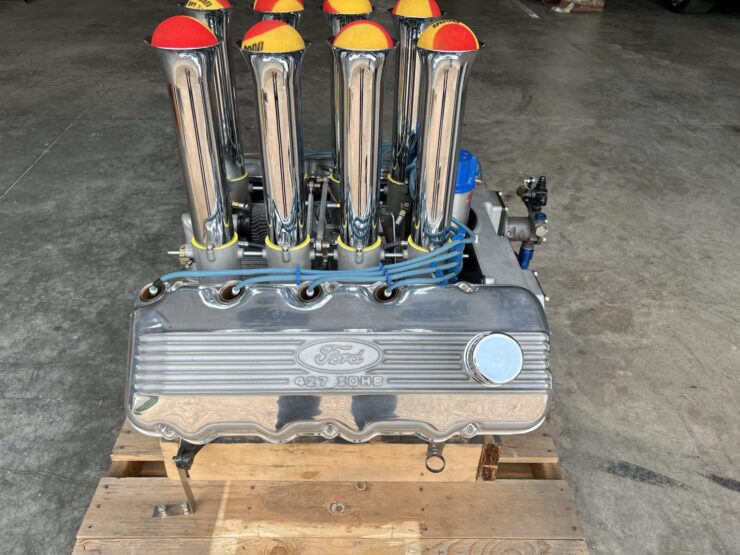
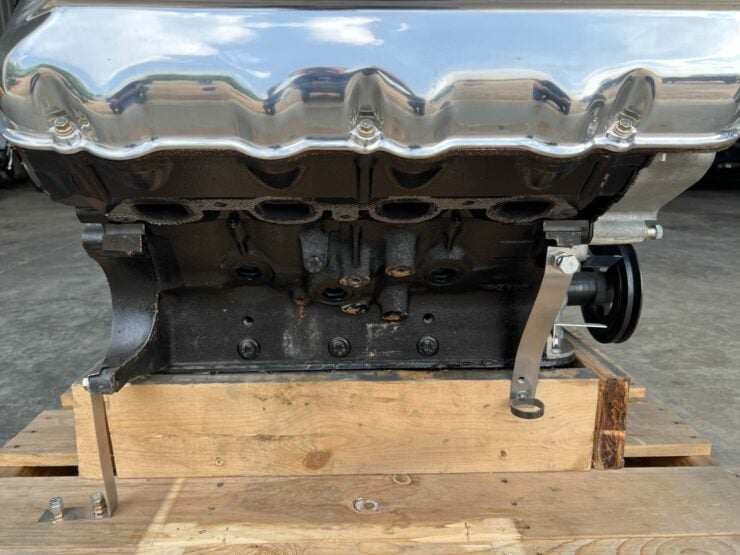
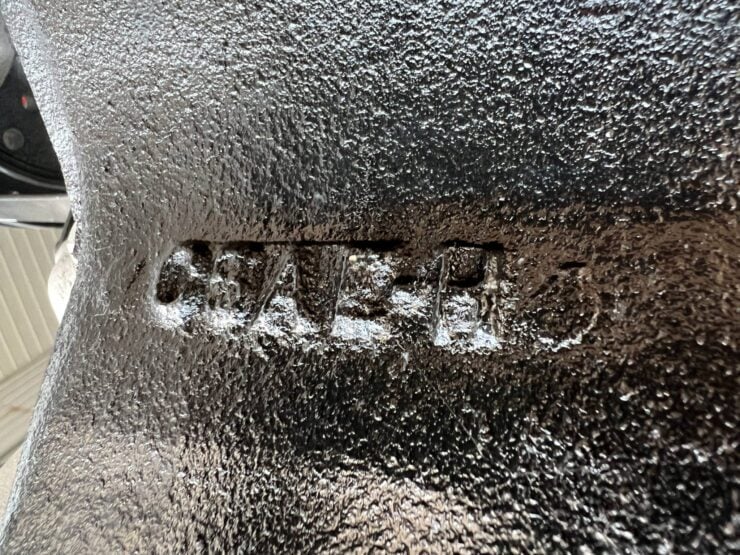
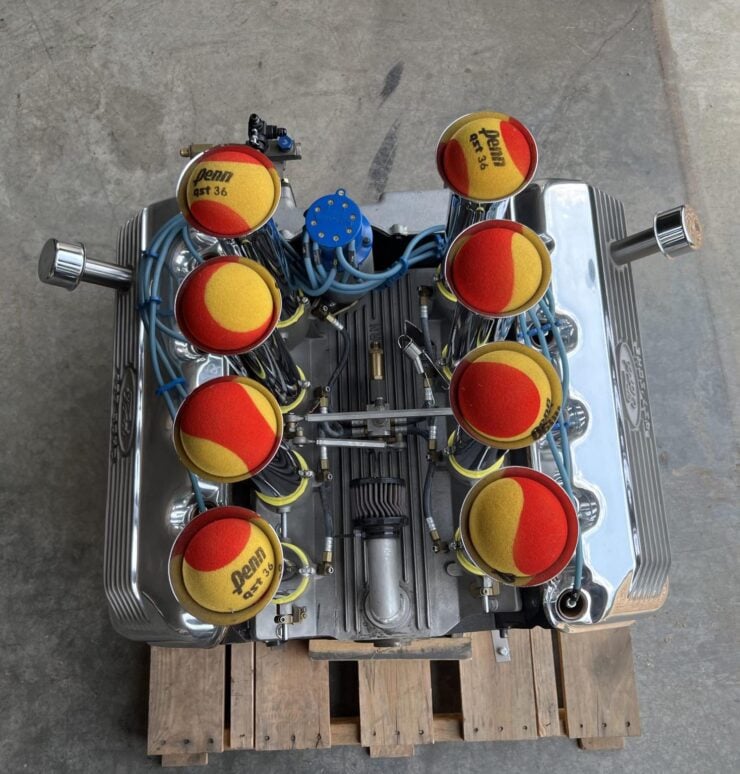
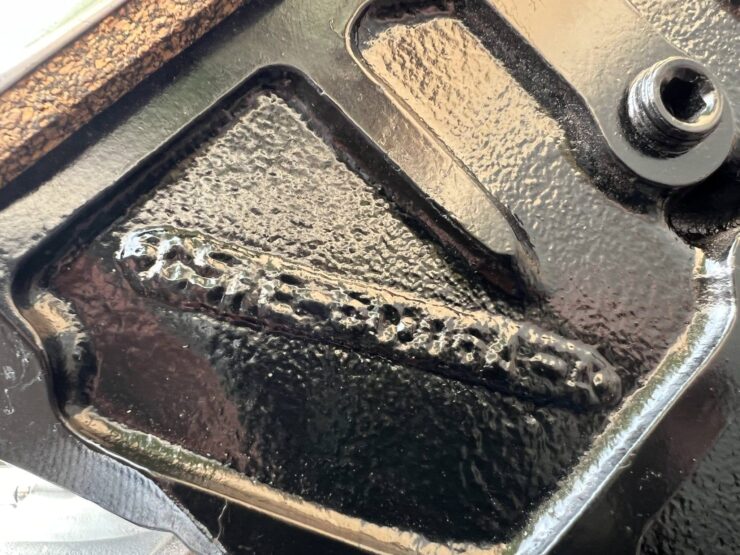
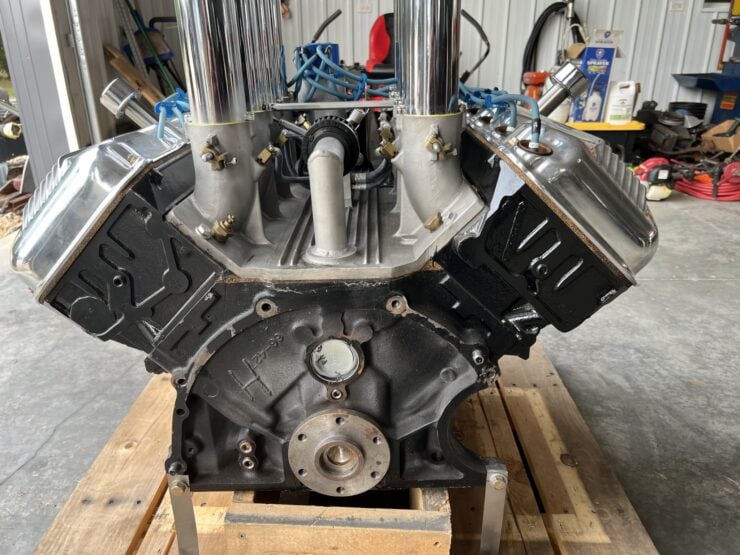
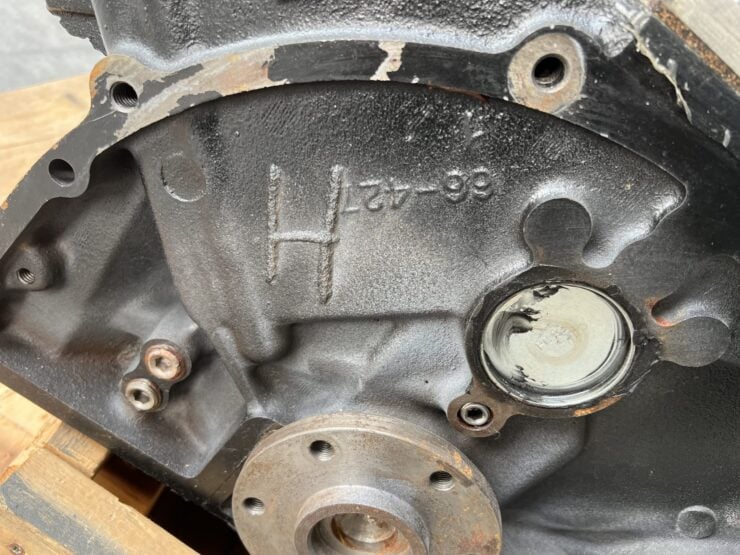
Images courtesy of Bring a Trailer

